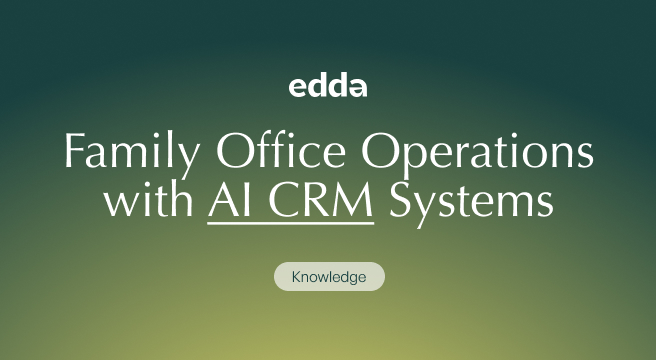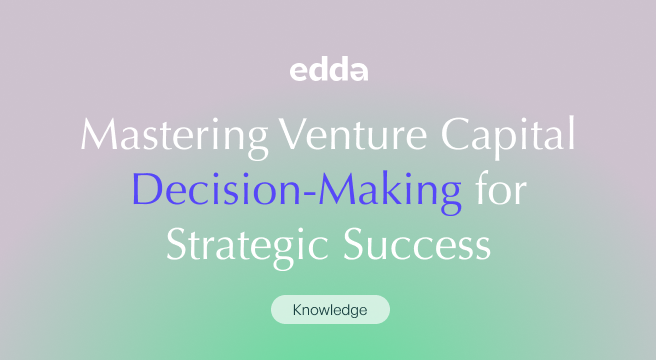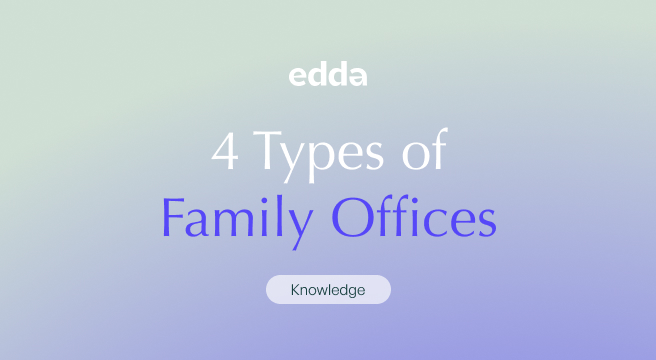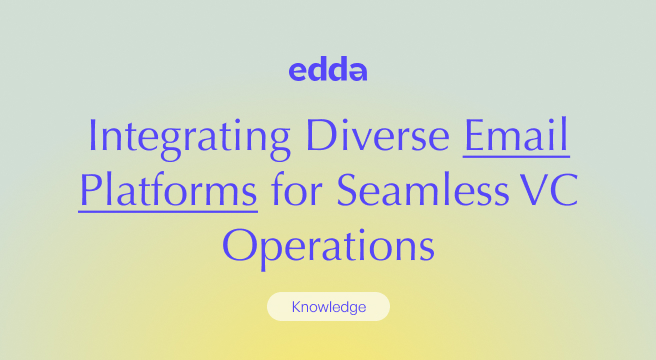Today, as we witness family offices burgeoning into one of the globe’s most vibrant investment conduits, the adoption of AI-powered customer relationship management (CRM) systems is on the rise.
These advanced tools are the fundamental gears driving the engine of modern family offices, enabling them to navigate their expanding universe with unprecedented ease and efficiency.
Over 10,000 family offices have been established globally, a significant portion of which have sprung up in the last decade and a half. The most successful are those who have recognized and embraced the power of technology, particularly deal flow CRM systems and other software for venture capital firms, to supercharge their growth.
In this article, we’ll explore how these advanced systems are redefining the way family offices manage their intricate networks, streamline operations, and unlock new horizons of opportunity. In addition, discover how Edda’s CRM for VC, private equity, and family offices is changing the way investment firms manage and nurture their relationships with clients
The Evolving Needs of Family Offices
As family offices evolve, they face a unique set of challenges that stem from their very nature. These entities, often sprawling across generations, are not just managing wealth but are also nurturing a legacy. This dual responsibility brings with it a complex web of relationships and a broad spectrum of investment and advisory needs that must be managed with precision and care.
Managing Cross-generational Relationships
At the heart of every family office is its people. From the founding generation to the newest members, each brings their own perspectives, goals, and challenges to the table. As families grow and diversify, so too does the network of relationships that the family office must manage. This expanding tapestry of connections can quickly become overwhelming when you consider the varying financial literacy levels, investment interests, and personal goals across generations.
Navigating a Diverse Service Landscape
Family offices are far from one-dimensional. They often encompass a wide array of services, from investment management and financial planning to legal advisory and estate planning. Each service area not only adds a layer of complexity to the office’s operations but also increases the number of external relationships—with advisors, partners, and service providers—that need to be managed effectively. The challenge here is not just in the volume of these relationships but in their diversity; each requires a tailored approach and an understanding of different industries and specialisms.
The Impact of Technological Integration
The integration of advanced CRM systems stands out as a beacon of efficiency. By providing a centralized platform for managing both relationships and services, these systems help family offices navigate their evolving needs with greater ease. The real power of this software goes beyond simply data entry into CRM platforms, it lies in its ability to provide actionable insights and foster a more strategic approach to relationship and service management.
AI-Powered CRM: A Keystone in Relationship Management
In family offices, where relationships are both a currency and a compass, the advent of AI-powered CRM systems is a jump forward. These sophisticated platforms offer more than a mere repository for contacts and transactions; they serve as dynamic engines for relationship cultivation and strategic decision-making.
Transforming Relationship Dynamics
The cornerstone of a Family Office’s success lies in its ability to maintain and strengthen relationships across the board—from family members to advisors and partners. AI-powered CRMs excel at this by offering a detailed understanding of each relationship’s context and needs. By analyzing communication patterns, engagement levels, and other key metrics, these systems can identify areas where relationships may need more attention or where opportunities for strengthening ties exist.
Smart Insights for Proactive Engagement
One of the standout features of an AI-enhanced CRM is its capacity for predictive analytics. This means the system can alert you to important milestones, suggest optimal times for outreach, and even recommend personalized engagement strategies. It’s like having a smart assistant who knows the ins and outs of your network, helping you to stay one step ahead in maintaining and deepening key relationships.
Streamlining Communication
AI-powered CRMs streamline communication by integrating with various channels and centralizing interactions. This not only ensures that no message is missed but also provides a holistic view of each relationship’s history, making every interaction informed and purposeful.
Broadening Horizons: AI-CRM as a Catalyst for Growth
The strategic utilization of AI-powered CRM systems is a catalyst for growth and opportunity within family offices. These advanced platforms unlock a new dimension of possibilities, from uncovering hidden opportunities to fostering collaborative investment endeavors.
Unveiling Hidden Paths to Opportunity
In the dense forest of potential investments and collaborations, AI-enhanced CRMs serve as invaluable compasses. By harnessing the power of data analytics and machine learning, these systems can reveal previously obscured pathways to new opportunities. This “relationship intelligence” taps into the vast network of connections, identifying potential leads, partners, and investment opportunities by analyzing patterns and intersections within your network that might otherwise go unnoticed.
Facilitating Strategic Alliances
The investment landscape is increasingly collaborative, with family offices often joining forces in syndicate deals or co-investments. Here, AI-powered CRMs shine by facilitating the formation and management of these strategic alliances. By providing a clear view of mutual connections and interests, these systems enable family offices to identify and engage with like-minded partners more efficiently, laying the groundwork for successful collaboration.
Enhancing Investment Decision-Making
The decision to invest is often the culmination of extensive research, analysis, and due diligence. AI-powered CRMs augment this process by providing a centralized platform for information gathering, analysis, and collaboration. With features designed to streamline the due diligence process, these CRMs ensure that investment decisions are informed, data-driven, and timely, significantly reducing the risk and enhancing the potential for high returns.
Navigating Due Diligence with Precision
Due diligence is a critical pillar in the architecture of investment decision-making within family offices. The transition towards internalizing this function, a trend gaining momentum in recent years, requires tools that can enhance efficiency and accuracy. AI-powered CRMs are indispensable allies, transforming the landscape of due diligence by infusing it with precision, speed, and strategic depth.
Streamlining the Information Gathering Process
The initial stages of due diligence often involve a complex and time-consuming process of gathering vast amounts of data. AI-powered CRMs simplify this task through advanced data management capabilities, enabling quick access to relevant information and insights. By centralizing data from various sources, these systems ensure a comprehensive foundation for analysis, reducing the time and resources typically expended in this phase.
Enhancing Analytical Capabilities
AI-enhanced CRMs don’t just aggregate data; they analyze it, offering nuanced insights that can significantly impact investment decisions. Through sophisticated algorithms, these systems can evaluate the viability of potential investments, assess risks, and highlight opportunities that align with the family office’s strategic objectives. This level of analysis, powered by AI, provides a depth of understanding that goes beyond surface-level assessments, enabling more informed and strategic investment choices.
Facilitating Collaborative Efforts
Due diligence, particularly for significant investments, often involves a collaborative effort among various stakeholders within a family office. AI-powered CRMs enhance this collaboration by providing a shared platform where insights, data, and analyses can be easily accessed and discussed. This not only ensures that all stakeholders are on the same page but also allows for a more dynamic and collective approach to decision-making.
Transforming Investment Management with Edda
Edda is adept at centralizing and streamlining the entire investment lifecycle for family offices and investment firms. By integrating crucial aspects such as deal origination, pipeline management, and investor relations into one cohesive platform, Edda offers a bird’s-eye view of investment processes.
Its intuitive design and comprehensive feature set, including advanced CRM capabilities, relationship intelligence, and accelerated due diligence, ensure that teams can manage deals and collaborations with unprecedented ease and efficiency.
Edda’s global footprint, with over $135 billion managed across more than 90 countries, attests to its effectiveness and widespread adoption among leading private equity and venture capital firms. This broad acceptance highlights Edda’s unparalleled ability to enhance daily operations, improve strategic decision-making, and ultimately transform investment firms.
Discover how Edda’s venture capital portfolio management software and CRM platform can revolutionize your investment management process and empower your firm with cutting-edge tools for success. Schedule a demo today and take the first step towards a more efficient, insightful, and connected investment journey.





